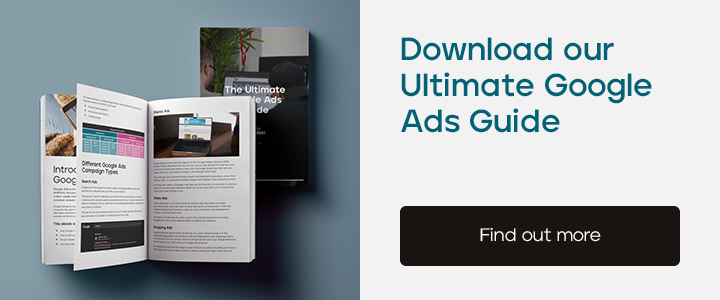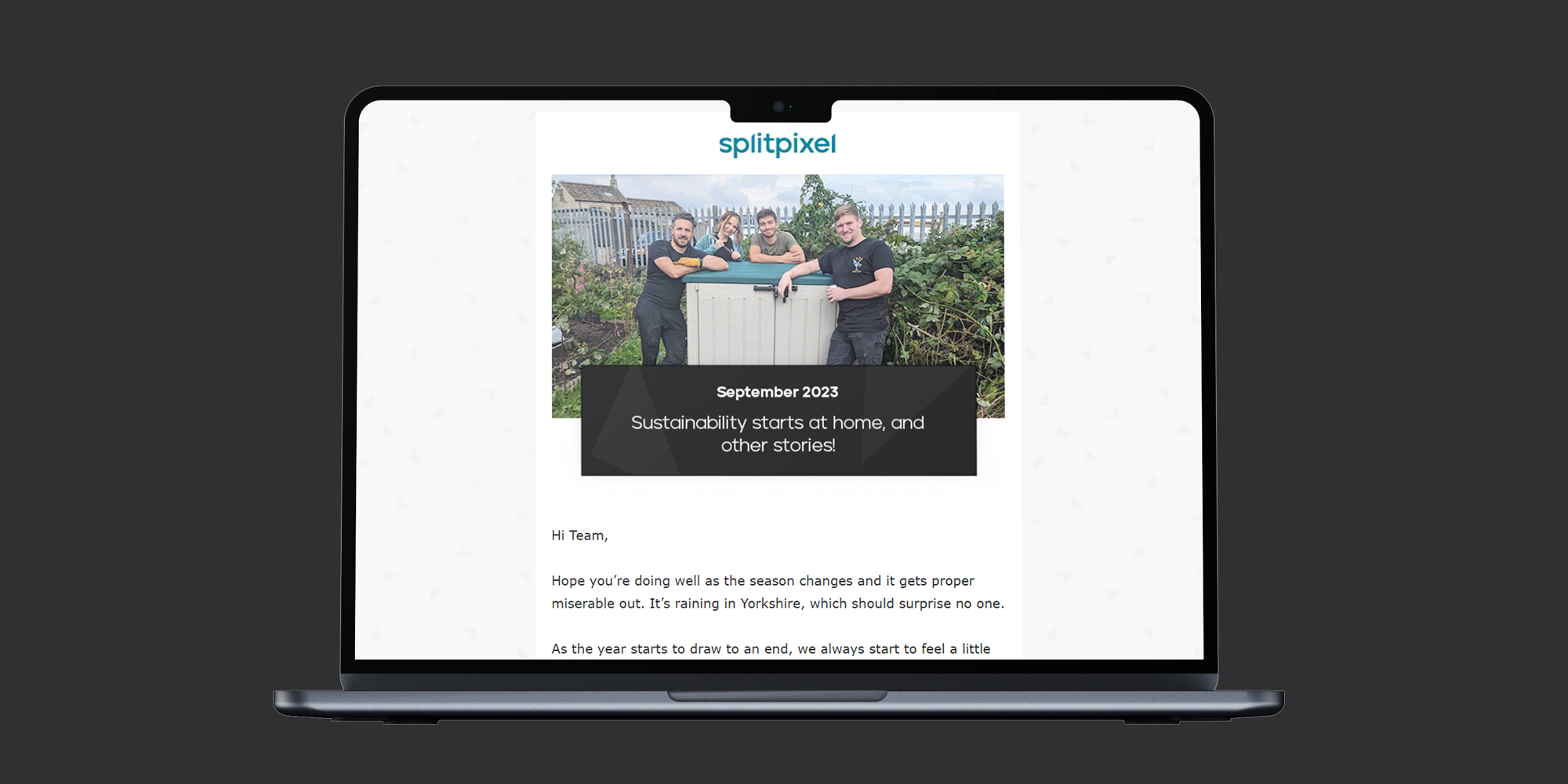If you’ve been keeping up with our PPC blog series, you’ll notice that I love to make an analogy between PPC advertising and Formula 1, and this blog is no different!
Every F1 needs a pit crew – how else is a driver expected to pit for fresh tyres and know the best strategy mid-race?
Optimising your account is the pit crew; regular check-ins and completing necessary tasks allows you to identify the weak points of performance, which campaigns to invest more money in, and when to make data-driven decisions to run an effective race.
Often, advertisers simply enable Google Ads and let it run in the background, but really, you’re just teeing up your account to DNF (do not finish).
We get it, for lots of business owners or marketing managers, it can be difficult to even know where to start tuning up your ads engine – that’s why we’re here to help.

PPC Optimisation Funnel
Here at Splitpixel, we use an optimisation funnel for each account we manage, so we know what improvements need to be made to an account before we can progress any further.
Because every account is different, some parts of the funnel may be in different orders. For example, if your landing pages are very poor, or if they have slow loading speeds, you should consider putting your focus into improving your website before pushing money into Google Ads.
Please find the funnel below, with explanations of what to do at each stage.

Conversion Tracking
Google Ads conversion tracking is arguably one of the most important aspects of the account. Having some form of tracking set-up helps you identify if Google Ads is driving conversions, and if so, through which campaigns, keywords and ads. If you don’t have any conversion tracking set up, you’ll never know which keywords drove which conversions. A lack of data in your account will make decision-making really difficult. You’ll notice that you’ll be relying on gut feeling, rather than making data-driven choices.
You’ll also be eliminating yourself from using any smart bidding strategy. Smart bidding strategies use the account’s conversion data to aid its future bids and to go after users who are likely to convert. If your account doesn’t have conversion tracking set up, you’re limiting yourself to manual bidding.
Every Google Ads account should have some form of conversion tracking set-up. If you’re unsure how to set this up, we have a whole blog dedicated to Google Ads conversion tracking. Likewise, we have a team full of PPC experts who would be happy to help you!
If you do have conversion tracking set up, you should task yourself to regularly check that your tags are firing correctly, be it through testing a form or purchase. Any slight changes to your website could impact your tag’s triggers, and before you know it, your account has missed out on tracking a whole bunch of data. We’d suggest checking each one of your tags fires correctly every couple of weeks.
Search Query Reports
Google Ads search query reports help advertisers identify what users have been searching for to trigger your ad. You can find this report by going to Campaigns > Insights and reports > Search terms.
If you notice that your campaigns aren’t performing as expected, the search term report is where you should go. You’ll want to make sure that the keyword you’re targeting matches the search queries they’re triggering.
For example, if you’re targeting the keyword “drop earrings”, but all of the search term traffic is related to “hoop earrings”, and you don’t sell hoop earrings, the users who are clicking through to your landing page are probably not having a very good user experience. If this is happening, you’re going to want to add negative keywords. In this example, negating “hoop earrings” from your drop earrings campaign will prevent your ad from appearing on these search queries.
On new accounts and campaigns, where comprehensive negative keywords and negative keyword lists aren’t in place, you’ll notice that irrelevant search queries will be picked up – a lot!
If you’re using Phrase or Broad match, this will be because of close variants. Close variants are search terms which Google thinks are relevant to the keyword but don’t quite use the phrase in the keyword. “Hoop earrings” as a search query being triggered by the keyword “drop earrings” is a good example, since Google is able to recognise that “hoop” and “drop” earrings are a form of earrings, it may decide that this is a close variant. Sadly, there is no way to disable close variants inside Google Ads.

New accounts should be having their search queries checked very frequently, every few days ideally, so that you save as much ad spend as possible. You’ll notice on accounts or campaigns that have been live a long time, that they won’t need search query report reviews as frequently for two reasons:
1.
Comprehensive search query reports have been done over a number of months and years, to where most irrelevant negatives have already been negated.
2.
Google’s machine will have become accustomed to understanding which search queries produce the best results (as long as the campaign is using smart bidding).
If your account and campaigns have been running for a long time, and you’re noticing that you don’t need to add in lots of negatives each time you check the search query report, consider scaling back the frequency of you needing to check these, and invest your time into areas lower down the funnel.
Keyword Reviews
If you’re largely happy with the search queries coming through your account, you’ll want to look into the keywords you’re currently targeting. To perform a keyword review, you’ll want to access your keyword report, by going to Campaigns > Audiences, keywords and content > Search keywords.
Filter your keywords by spend. This way, you’ll see which keywords have spent the most money in your time period.
Now you have your filters, you’ll want to find keywords with a high spend, but low conversion numbers. These are known as ‘fatty keywords’. As an advertiser, your job is to cut out the fat, or at least identify why that keyword is performing poorly. Before pausing a keyword based on poor performance, ask yourself:
1.
Is this keyword driving the correct search queries? To check, go back to your search term report, and filter to check search queries only triggered by this keyword. If there are large disparities between search queries and your keyword, consider negating these, before pausing your keyword, since these irrelevant search queries aren’t a true reflection of the keyword.
2.
Is your keyword sending users to a relevant landing page? Remember, user experience is everything. If you’re targeting the keyword “diamond drop earrings”, but these frequently go out of stock, users who land on a page with no stock will almost always bounce off and not result in conversions. Likewise, if you target a keyword which your business rarely provides as a service, pause this keyword. Our advice would be to only ever target keywords that your landing pages mention and is a core KPI for your business. Regularly check that your keyword, landing page and KPIs are singing from the same song sheet.
3.
Could your keyword be driving search queries with mixed search intent? Even if your search queries correlate with your keywords and your landing page, could there be a hidden meaning behind the keyword you’re targeting? Check this by searching this keyword in the search results, and make sure organic listings correlate with your landing page. A common mistake is that Business-to-Business advertisers target keywords that can also have Business-to-Consumer intent. A good way to test this is if your high-spending B2B keyword is driving Google Shopping traffic on the results page – that means you’ve probably got a problem with mixed search intent. For example, if you were a wholesaler selling t-shirts in bulk, where users had to request a quote for a minimum of 100+ quantities, you’d likely see ecommerce results next to your search ads. You’d risk your ad appearing to users who may only be looking to purchase five t-shirts. This is a prime example that, despite your keyword being highly relevant to your website, it contains two different types of search intent: users searching to request a quote, and users who searching to make a small e-commerce order.

After asking yourself these questions, and you’re still seeing poor performance, this would be the right time to pause the particular keyword. Ideally, check in on your high-spending keywords every 30 days, making sure they’re driving the right traffic to the right pages. Before pausing a keyword, make sure it’s driven enough click data. Anything with less than 100 clicks across its lifespan has not had enough click data to justify pausing.
Bid Strategy Checks
Bid strategy checks are vitally important, and their frequency can depend on which strategy you’re using. There are two types of bid strategy you can use, smart bidding strategies and non-smart bidding strategies.
If you get sufficient conversions, and you have healthy campaign budgets, you should be using smart bidding, since Google Ads can use previous conversion data to aid its future bids; optimising itself to bottom-of-funnel users.
You should be checking your bid strategies every 30 days, making sure your campaign is meeting the sufficient conversions it requires to run smart bidding efficiently (roughly 10-15 conversions a month).
If you’re seeing your campaign conversions dip over time, you’ll probably notice your campaign’s CPC become more sporadic. If you are seeing this happen, ask yourself what could have changed to cause these conversion rate dips:
1.
Is your conversion tracking working correctly?
2.
Have you decreased your campaign budget?
3.
Have your search queries become less relevant, or has search volume declined?
4.
Have you changed your ad landing page?
If it’s a no to all of these, it may be that Google’s machine learning has hit a point of inefficiency on the existing bid strategy.
In case you’re running tCPA or tROAS bid strategy, it’s possible that your targets are restricting performance. Make sure your targets are aligned with the actual performance of your campaign. Setting too low of a target could mean Google’s machine learning isn’t working as hard as possible.
As a result, the machine could be allowing your ads to appear to users high up the marketing funnel (and who are not likely to convert), wasting your marketing budget. Likewise, and arguably more harmful, a bid strategy target that is harder to achieve will only limit your ad’s visibility.
If you’re giving the machine unrealistic targets, the machine will simply choose to not display your ad, since it will know that it can’t produce the results you’re after with your budget. Making sure your bid strategy targets and your actual performance are aligned every 30 days therefore means you’ll be targeting more relevant users, without negatively harming your ads’ visibility.
Landing Page Reviews
If you’re confident that the traffic you are sending to your website is highly relevant, and your conversion tracking is running correctly, it’s time to review your landing pages.
Before you run any marketing activity in the first place, you should make sure that your landing pages are high quality, and page speeds don’t negatively impact user experience. If your landing pages aren’t good, we’d highly recommend investing your time into conversion rate optimisation (CRO) before pushing any paid traffic through these pages.
Sending users to an unoptimised page will only lead to a wasted ad budget. This can often lead to a sour taste in the mouth of businesses, who then blame Google Ads for driving low-quality traffic when in reality, it’s unoptimised landing pages which is the main culprit for bad performance.
To analyse whether your landing pages have low CRO, it’s best to check whether other traffic channels suffer from low CRO first. If organic search, referral, direct and social traffic also have low CROs, it’s further evidence that this isn’t just a PPC issue, but a landing page issue. Consider checking your landing pages every 90 days.
Unsure what to look for? Here at Splitpixel, we have a host of digital marketers and web designers at hand to help you improve your website conversion rates!
Ad Copy Reviews
Unlike social media ads, which frequently suffer from ad fatigue (where the same users frequently see the same ad), Google search ad copy doesn’t have to be as regularly checked and changed. This is because search ads can only be triggered when the advertiser’s keyword is triggered, implying that the advertiser’s offerings are highly relevant to the user’s needs.
That being said, checking your ad copy should be something you’re completing every 90 days. It’s important to re-align any ads that might not be relevant to recent search queries.
In this scenario, it’s possible the right users aren’t clicking your ad, because the ad messaging doesn’t quite align to their search query, and as a result, this user clicks a competitor instead. Evidence that this may be occurring in your account is if your ads CTR is very low.
Ad Extensions Review
Ad extensions (also known as ad assets) are largely used by advertisers to help spruce up the ad copy, making the ad look more bulky in the search results, and taking up more ad space from competitors.
However, you are going to want to make sure that your ad extension messaging complements the keyword traffic you’re going after. For example, make sure that each campaign sitelinks are sending users to a page that contributes to achieving the advertiser’s KPIs; blog or news pages typically should be avoided in this case since these are more informational and top-of-funnel (ToFu).
However, this isn’t always the case, as some blogs could link back to your core KPIs very easily (i.e. discussing why your product or service is much better than competitors). Within this review, replace or remove ad extensions which are performing poorly. Explanations on each ad asset and what to look for can be found in our ad extensions blog. We’d suggest reviewing your campaign’s extensions every 90 days.
Quality Score Reviews
Google Ads quality scores are a scoring system for each of your keywords, measured on a scale from 1-10. They are made from three metrics: ad relevancy, expected CTR and landing page experience. Each keyword will be given a score based on how these three metrics are being met. Google suggests that a higher quality score will improve your ad rank and as a result, you can drive a cheaper CPC.
A high ad relevancy score is easy to achieve – you simply have to include the keyword you’re targeting in your RSA’s headline. While there are some unique scenarios, like bidding on a competitor’s brand name or on very long-tail keywords, all your keywords should have an above-average ad relevancy score.
A high expected CTR can be tricky to achieve since expected CTR can be impacted in two separate ways:
1.
If your search queries don’t match your keyword intent, then the user is unlikely to click your ad.
2.
If your ad doesn’t have an incentive to be clicked, then your ad will naturally have a low CTR, negatively harming your expected CTR.
Your expected CTR will improve when your ad achieves a high CTR. In which case, you’ll want to make sure your ad is only appearing to the correct users, and your ad contains messaging that provides an irresistible offer, to where a user feels compelled to click.
A high landing page score can only be achieved if your page is meeting your user’s needs. This is indicated by variables such as how relevant your content is, the site speed and how friendly your site is to mobile devices. Typically, if a keyword is driving a high conversion rate, it would suggest users are finding the page helpful in meeting their wants and needs.
In theory, if your search queries are aligned to your keywords, ad copy and landing page, there is no reason for your keyword to not be above a seven. However, if your keyword is below a seven, you’ll want to conduct a quality score review. Starting with the poorest performing keyword, forensically analyse why that keyword might have a low score across a specific period, asking yourself:
- Is this keyword driving the correct search query intent? (Expected CTR)
- Is this keyword mentioned in my ad? (Ad relevancy)
- Does the ad my keyword is triggering have a strong CTR compared to my other ads? (Expected CTR)
- After a user has clicked the ad, is the keyword or keyword theme mentioned on my landing page? If so, are users finding it easy to convert? (Landing page experience)
It’s likely that Google is marking you down because your keyword is not fulfilling its full potential in one of the above areas. Consider checking your keyword quality scores every 90 days.
A/B Testing
While some PPCers say that you should always be testing different variables against one another, you should only be testing when you know that the variables in your control are working in harmony. There would be no point in split-testing two different landing pages if you know that your keywords are driving search traffic which isn’t relevant to your website.
Every 90 days, we recommend identifying opportunities to split-test your campaign’s bid strategy, keyword match types (exact and phrase match vs broad match), ad copy messaging or landing page changes. Our recommendation would be to identify where your ads are the weakest, and test changes to try to improve performance. Using the experiments feature, you could tell your campaigns to 50/50 split the budget between the changes across a specific date period, so you have a fair reflection of performance.
Smaller Optimisation Tasks
While we suggest following the funnel, there are some smaller checks we’d suggest completing every 90 days. These are:
- Device bids adjustments
- Location bids adjustments
- Observational audience adjustments
Being stuck with vanity metrics
You can sometimes over-optimise your account! In fact, the only way to increase performance is either to lower your tCPA or tROAS, or add some broader keywords to your account.
In this scenario, it’s always best to double-check that your campaign’s performance isn’t creating a vanity metric. For example, if your non-brand search campaign is driving a conversion rate of 10%, ask yourself, are those conversions actually leading to high-value customers? If they aren’t, then your account is driving a vanity metric; performance at face value is excellent, but the actual value it’s driving is poor.
You can escape vanity metrics by using offline conversions. Regularly uploading customer data back into Google’s algorithm allows you to not only see which form fill conversions became a sale, but also allows you to see which keyword triggered this high-value customer, as well as their search term.
It might be that your account has a keyword that has driven 50 form-fill conversions in three months, but these have all been low-lead quality and none of them have driven a sale. In this instance, the keyword is doing more harm than good to the account. Without offline conversion data, you’ll never be able to justify pausing a keyword with a high conversion rate. However, with offline conversion data, you’ll be able to identify which keywords are negatively harming your account.
Not only this, but feeding back conversion data to Google Ads can be invaluable for the algorithm since you can optimise the machine to go after more users like the data you’ve uploaded; something impossible to achieve without offline conversions set-up.
Setting up offline conversions often requires help from your website developer. Here at Splitpixel, we have a whole team of web developers who love building robust websites. We’d be happy to help you with your offline conversion tracking needs!
Become The Google Ads Champ
Managing a Google Ads account is a lot of work, with lots of tasks and responsibilities that need to be completed across regular intervals.
Just like an F1 team, all of these tasks shouldn’t be left to one person, it’s important to have a full team all delegated to manage an account.
If you’re understaffed, or struggling to get time to look into your Google Ads account, it’s highly likely that your campaign’s performance suffers as a result. Here at Splitpixel, we have a competent digital marketing team that completes these tasks daily for our clients. Contact our PPC experts, we’ll be happy to help support you and your PPC campaigns.




